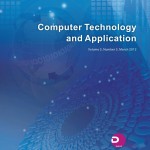 A paper about combating cyberterrorism is coming under fire after allegations of plagiarism sparked on social media.
A paper about combating cyberterrorism is coming under fire after allegations of plagiarism sparked on social media.
Soon after the paper was published by the journal Computer Technology and Application in 2015, Orgnet LLC, a network analysis software company, announced on Twitter that the paper took content from its webpage. The firm tweeted:
https://twitter.com/orgnet/status/635497260785111041
Another Twitter user responded to Orgnet pointing out that section 6.1 of the paper under question seems to be copied from another website, which describes cyberattacks by Al-Qaeda. In a series of tweets, some text from the paper was linked to other sources, including a conference proceeding and another academic paper, none of which are cited by the paper.
Valdis Krebs, founder and chief scientist at Orgnet LLC, told us Google Scholar sent him an email notification suggesting that one of his writings had been cited. Instead, he said, section 4.3 of the paper seemed to copy text from his company’s webpage. He added:
I have had my website plagiarized many times, but usually for another website (including some well known universities). Never for an academic paper.
We took a look at the text to compare, and they’re near-exact copies, including the figure on Orgnet’s website. The paper mentions Krebs and Orgnet by name in section 4.2, but provides references to two different sources in sections 4.3.
We also found that some of the paper’s section 4.1 also contains text from this Washington Post article, which is also not cited by the paper.
Here’s some text from section 4.1:
In the mountains near Jalalabad in November 2001, as the Taliban collapsed and al Qaeda lost its Afghan sanctuary, Osama bin Laden biographer Hamid Mir watched every second al Qaeda member carrying a laptop computer along with a Kalashnikov as they prepared to scatter into hiding and exile. On the screens were photographs of Sept. 11 hijacker Mohamed Atta.
And here’s the first paragraph from the Washington Post article:
In the snow-draped mountains near Jalalabad in November 2001, as the Taliban collapsed and al Qaeda lost its Afghan sanctuary, Osama bin Laden biographer Hamid Mir watched “every second al Qaeda member carrying a laptop computer along with a Kalashnikov” as they prepared to scatter into hiding and exile. On the screens were photographs of Sept. 11 hijacker Mohamed Atta.
The article, “Information Technology in Domain of Electronic Intelligence and Cyberterrorism Combat,” summarizes the state of surveillance of electronic communications by governments around the world.
Thomson Scientific’s Web of Knowledge does not index Computer Technology and Application. The journal is published by David Publishing or David Publishers, both of which are on Jeffrey Beall’s list of “potential, possible and probable” predatory publishers.
We reached out to one of the paper’s co-authors Robert Brumnik, quality manager at engineering firm Metra in Trzin, Slovenia and a lecturer at GEA College Faculty for Entrepreneurship in Ljubljana, Slovenia. He told us the paper is not a “research paper”, it is a “review paper.”
And yes of course some of sections are inserts from other articles (academic, non-academic, from journal[s] etc) and researche[r]s, [because] that’s…[a] review article.
We asked Brumnik if he was aware that parts of the paper include direct passages from other sources, and he told us his institute has a plagiarism policy and checks papers using detection software, as does the publisher. He added:
It’s true that this paper [was] prepared by me and my co-author and is possible that in some section[s] [it] is not well cited (so my apologies in advance).
We’ve also contacted the journal and will update the post with anything else we learn.
Hat Tip: Orgnet LLC
Like Retraction Watch? Consider making a tax-deductible contribution to support our growth. You can also follow us on Twitter, like us on Facebook, add us to your RSS reader, sign up on our homepage for an email every time there’s a new post, or subscribe to our new daily digest. Click here to review our Comments Policy.
More and more, people are tuning into “alternative” Web sites for news and views. That means that the site plagiarised, for example, is far more widely accessed than goofs like the dude who plagiarised it ever would imagine.
Copying his text AND his figure is just so egregious. A figure has to be made and is so visually distinctive. One does not “accidentally” copy someone else’s. If the journal uses software, clearly it doesn’t work well, OR, the person looking at it decided to just let this slide.